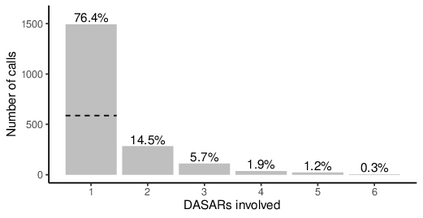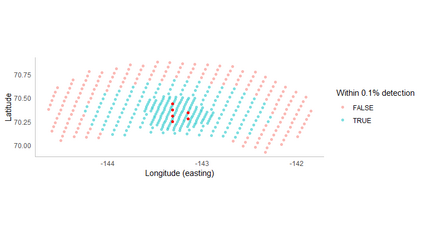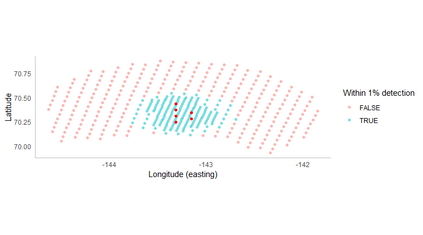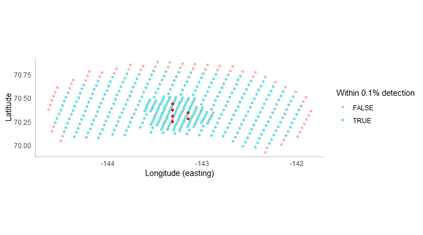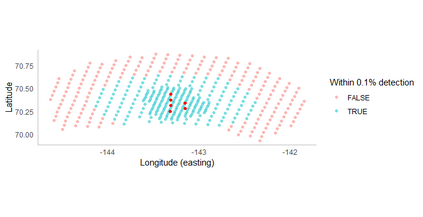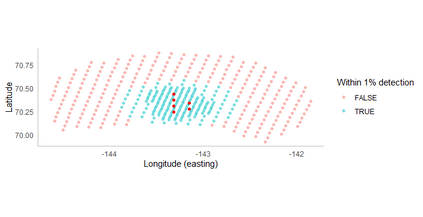Passive acoustic monitoring is a promising method for surveying wildlife populations that are easier to detect acoustically than visually. When animal vocalisations can be uniquely identified on an array of several sensors, the potential exists to estimate population density through acoustic spatial capture-recapture (ASCR). Detections need to be correctly identified and associated across sensors so that capture histories can be built. However, sound classification is imperfect, and in some situations a high proportion of sounds detected on just a single sensor ("singletons") are not from the target species, i.e., are false positives. We present a case study of bowhead whale calls (Baleana mysticetus) collected in the Beaufort Sea in 2010. We propose a novel extension of ASCR that is robust to these false positives by conditioning on calls being detected by at least two sensors. We allow for individual-level detection heterogeneity through modelling a variable sound source level, we model an inhomogeneous call spatial density, and we include bearings with varying measurement error. We show via simulation based on the case study that the method produces near-unbiased estimates when correctly specified. Ignoring source level variation resulted in a strong negative bias, while ignoring inhomogeneous density resulted in severe positive bias. The case study analysis indicated a band of higher call density approximately 30km from shore; 60.7% of singletons were estimated to have been false positives.
翻译:被动声学监测是勘测野生生物群落的一个很有希望的方法,在声学上比视觉上更容易检测到。当动物声学可以在某些传感器的阵列上找到独特的动物声学时,就存在通过声音空间捕捉-捕捉(ASCR)来估计人口密度的潜力。检测需要正确辨别,并贯穿于传感器,以便建立捕捉历史。然而,健全的分类是不完善的,在某些情况下,仅仅从单一传感器(“星盘”)上检测到的高比例的声音并不是来自目标物种,也就是说,是虚假的阳性。我们在2010年对博福特海收集的弓头鲸呼叫(Baleana mysticeteutus)进行案例研究时,我们提出对浮头鲸呼叫(Beaufort Sea)的量学研究,我们提议对ASRCR进行新的扩展,通过对至少由两个传感器检测到的呼声量进行调节,从而能够正确识别。我们通过模拟来进行个体层面的检测,我们模拟了一个无色调空间密度,我们包括了不同的测量错误。我们通过案例研究通过模拟显示,近乎无偏差偏差度的密度的直判断度,从而得出了直系的直判的直判。

